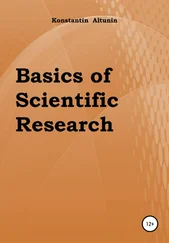Registered Offices John Wiley & Sons, Inc., 111 River Street, Hoboken, NJ 07030, USA John Wiley & Sons Ltd, The Atrium, Southern Gate, Chichester, West Sussex, PO19 8SQ, UK
Editorial Office The Atrium, Southern Gate, Chichester, West Sussex, PO19 8SQ, UK
For details of our global editorial offices, customer services, and more information about Wiley products visit us at www.wiley.com.
Wiley also publishes its books in a variety of electronic formats and by print‐on‐demand. Some content that appears in standard print versions of this book may not be available in other formats.
Limit of Liability/Disclaimer of Warranty In view of ongoing research, equipment modifications, changes in governmental regulations, and the constant flow of information relating to the use of experimental reagents, equipment, and devices, the reader is urged to review and evaluate the information provided in the package insert or instructions for each chemical, piece of equipment, reagent, or device for, among other things, any changes in the instructions or indication of usage and for added warnings and precautions. While the publisher and authors have used their best efforts in preparing this work, they make no representations or warranties with respect to the accuracy or completeness of the contents of this work and specifically disclaim all warranties, including without limitation any implied warranties of merchantability or fitness for a particular purpose. No warranty may be created or extended by sales representatives, written sales materials or promotional statements for this work. The fact that an organization, website, or product is referred to in this work as a citation and/or potential source of further information does not mean that the publisher and authors endorse the information or services the organization, website, or product may provide or recommendations it may make. This work is sold with the understanding that the publisher is not engaged in rendering professional services. The advice and strategies contained herein may not be suitable for your situation. You should consult with a specialist where appropriate. Further, readers should be aware that websites listed in this work may have changed or disappeared between when this work was written and when it is read. Neither the publisher nor authors shall be liable for any loss of profit or any other commercial damages, including but not limited to special, incidental, consequential, or other damages.
Library of Congress Cataloging‐in‐Publication Data
Names: Domingo, George, 1937– author.
Title: Semiconductor basics : a qualitative, non-mathematical explanation of how semiconductors work and how they are used / George Domingo, Berkeley, CA, US.
Description: First edition. | Hoboken, NJ, USA : Wiley, [2020] | Includes bibliographical references and index.
Identifiers: LCCN 2020015406 (print) | LCCN 2020015407 (ebook) | ISBN 9781119702306 (cloth) | ISBN 9781119597117 (adobe pdf) | ISBN 9781119597131 (epub)
Subjects: LCSH: Semiconductors. | Solid state electronics. | Electronic apparatus and appliances.
Classification: LCC TK7871.85 .D654 2020 (print) | LCC TK7871.85 (ebook) | DDC 621.3815/2–dc23
LC record available at https://lccn.loc.gov/2020015406LC ebook record available at https://lccn.loc.gov/2020015407
Cover Design: Wiley
Cover Images: Computer motherboar © Bet_Noire/Getty Images, Two People ‐ Drawn by Pey Llussà, Circuit Board © filo/Getty Images, Central processor unit © Artem_Egorov/Getty Images, Graphene sheet © KTSDESIGN/SCIENCE PHOTO LIBRARY/Getty Images
To my family for their love and support
I would like to recognize all those scientists, engineers, professors, authors, teachers, and also students who in the past 130 years with their research, experiments, theories, analysis, publications, and textbook have been able to explain beautifully how matter behaves, how to use it, and how to explain it to the next generation of scientists. In the process they created an electronic revolution. As someone already said, we are sailing on the shoulders of all those thousands of geniuses that preceded us.
I want to acknowledge the efforts and support of the Wiley editors who made the text more readable and clearer.
I want to thank my family who have been always helpful, encouraging, and patient with me and my project.
Finally, I would like to mention Dr. Gerry Hanh, who upon reading the first chapters that I wrote as a hobby, insisted I send them to Wiley, resulting in the book you have now in your hands.
A couple of years ago, I was asked to give a talk to the Rotary club in Terrassa, a city about 20 miles northwest of Barcelona. They asked me to divide the talk into three parts: 15 minutes biographical, 15 minutes on my technical work, and 15 minutes about NASA. The first and last 15 minutes of the talk went well, but the technical explanation about how infrared detectors work was disappointing. Yes, they did understand the uses and applications of infrared detectors, my technical work with the astronomical observatories of NASA, but the explanation on how infrared detectors work was not as clear and instructive as I had hoped. I was then and I am now convinced that any educated person can understand how semiconductor devices work. This talk two years ago was my motivation to start writing this book.
Semiconductors are the basis for almost all modern electronic devices. For many people semiconductors are a mysterious material that somehow has taken over modern electronics. In the same way that we understand the concept of god and creatures, but semi‐gods are confusing, most of us have an idea of what a conductor (electricity flows through it) and an insulator (it doesn’t) are, but what the heck is a semiconductor? Furthermore, the prevalent material used for fabricating semiconductors is pure silicon, the second most common element found on earth (28%) after oxygen (47%). Why not use aluminum, the next common element (8%), or strontium or some other exotic and more classy material? Why do we use semiconductors instead of conductors? Don’t we want electrons to move freely through our devices?
I attempt here to explain why and how semiconductors work in a form that any educated person can understand. Every chapter explains the subject in a qualitative way, with drawings, photographs, and figures, and very simple relationships (I hate to use the word “equations” here). At the end of most chapters I add appendices where I include some mathematical formulation with the relevant equations for those who would enjoy looking a little deeper into the subject. I do not try to proof these equations; my purpose is not formally present to you the physics of semiconductors (there are many excellent books that do that) but just to show what the results are. In this book you have to take these results on faith.
Unless you are very allergic to math, do not skip the appendices. There are interesting concepts that amplify the understanding of how semiconductors work. Don’t worry; there are no problems at the end of each chapter and no suggested quizzes.
First, I explain what a semiconductor is, the different types we use, and how they are different from conductors and insulators. Next, I explain the key devices that can be constructed using the semiconductor materials: diodes, passive element, and transistors. I talk about the integrated circuits, how we build them and the larger electronic components, and finally what can we expect in the future ( Chapter 15). I interrupt the “theoretical” flow with chapters devoted to applications ( Chapters 4, 7, and 9) that can be understood with just the concepts I have covered in the previous chapters.
Читать дальше











